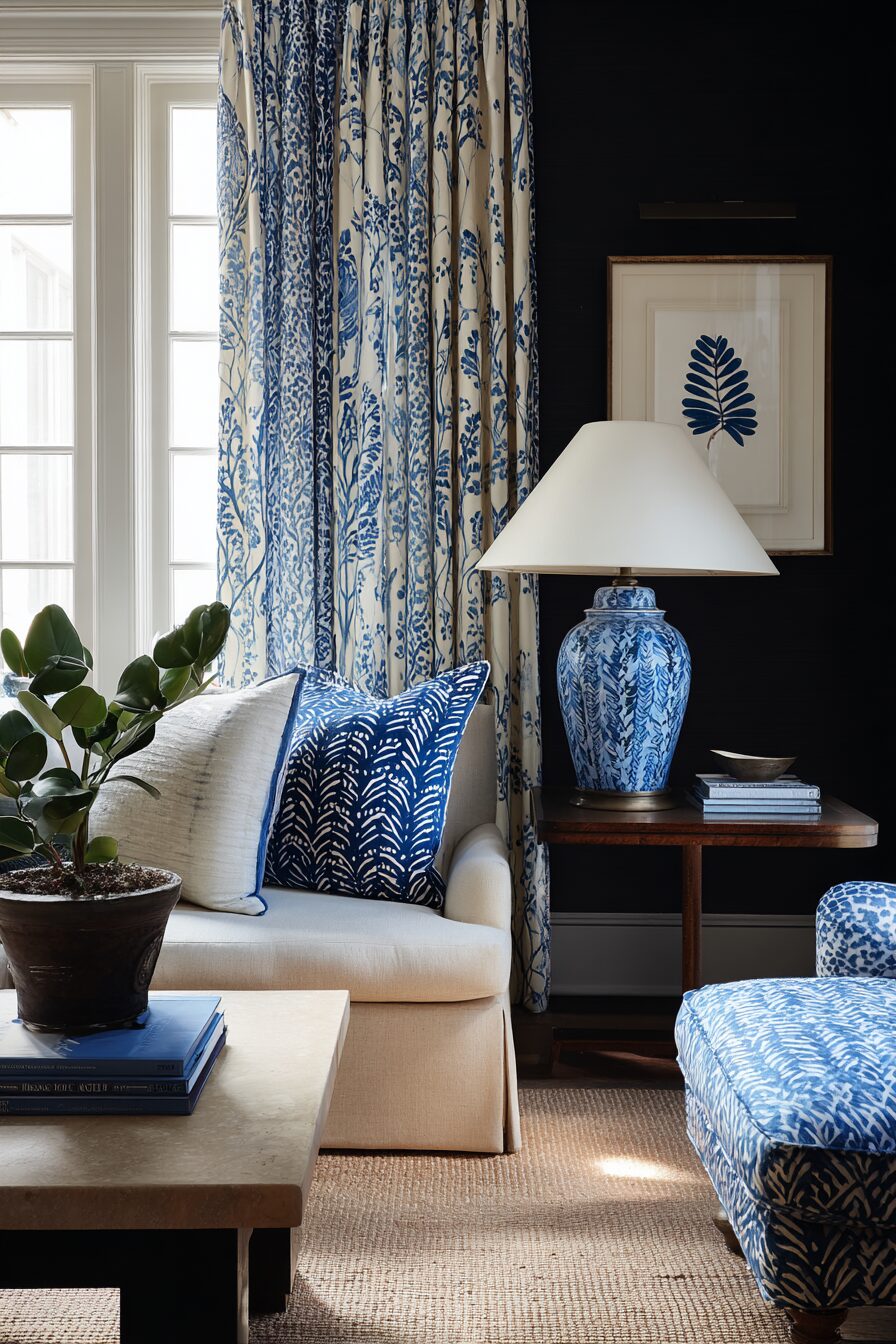Creating a home that feels like a warm hug doesn’t have to be complicated or expensive.
The secret lies in thoughtful textile layering – combining rugs, throws, and pillows in ways that add dimension, comfort, and personality to your space.
Ready to create rooms so cozy your friends won’t want to leave?
The Magic of Seasonal Textile Rotation
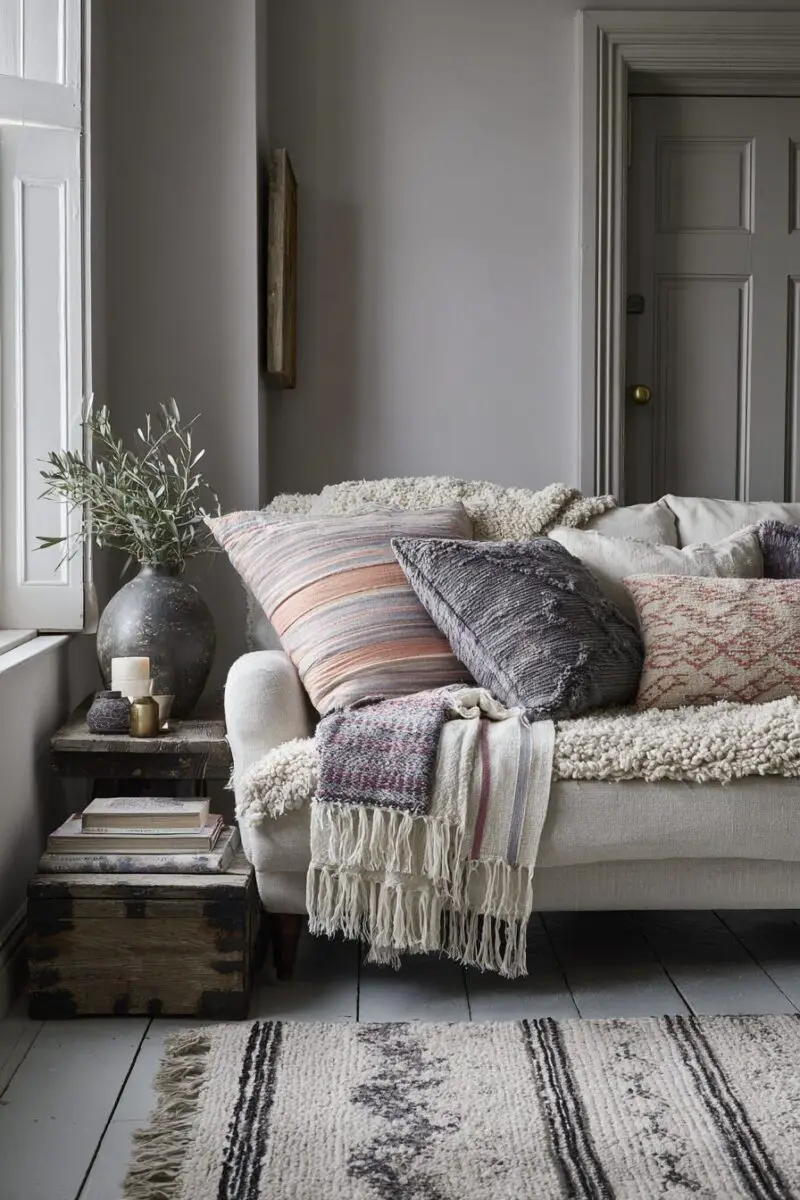
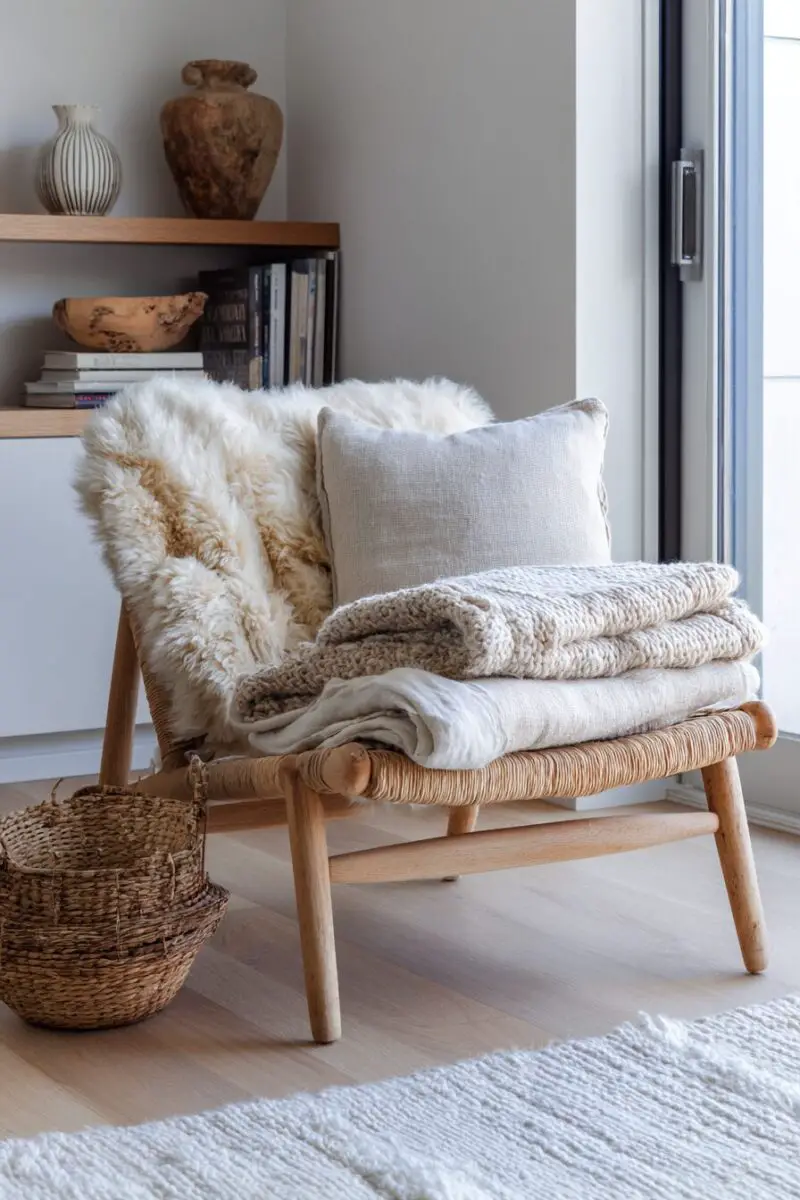
Your home should evolve with the changing seasons, just like your wardrobe does.
Seasonal textile rotation isn’t just practical – it’s the secret weapon of interior stylists who understand that our comfort needs change throughout the year.
Think lightweight linen throws and cotton rugs in summer, switching to chunky knits and wool area rugs when temperatures drop.
This approach gives you the perfect excuse to refresh your space without major renovations or furniture overhauls.
The seasonal shift doesn’t need to break the bank either – investing in a core collection of quality textiles in different weights allows you to cycle them through your home year-round.
For spring, consider bringing in botanical patterns and lighter hues that mirror the awakening happening outside your windows.
Summer calls for breathable fabrics like cotton and linen in cooler tones that visually lower the temperature of your space.
Fall is prime time for introducing warm amber, rust, and golden tones through throws and pillow covers that mirror the changing leaves.
Winter deserves the heaviest layers – think faux fur, velvet, and chunky cable knits that create visual and physical warmth.
Storage becomes your friend in this rotation system – vacuum bags under beds or dedicated textile storage boxes in closets keep off-season items clean and compact.
The psychological benefit of this seasonal shifting goes beyond aesthetics – it signals transitions to your brain and helps you mentally adapt to the changing year.
Create a seasonal ritual around your textile rotation, perhaps coinciding with daylight saving time changes or solstices.
This practice connects you more deeply to the rhythms of nature even while indoors.
Remember that seasonal doesn’t necessarily mean holiday-themed – subtle nods to the time of year through texture and color work better than overtly themed decor.
Color Psychology: Strategic Textile Palettes for Every Mood
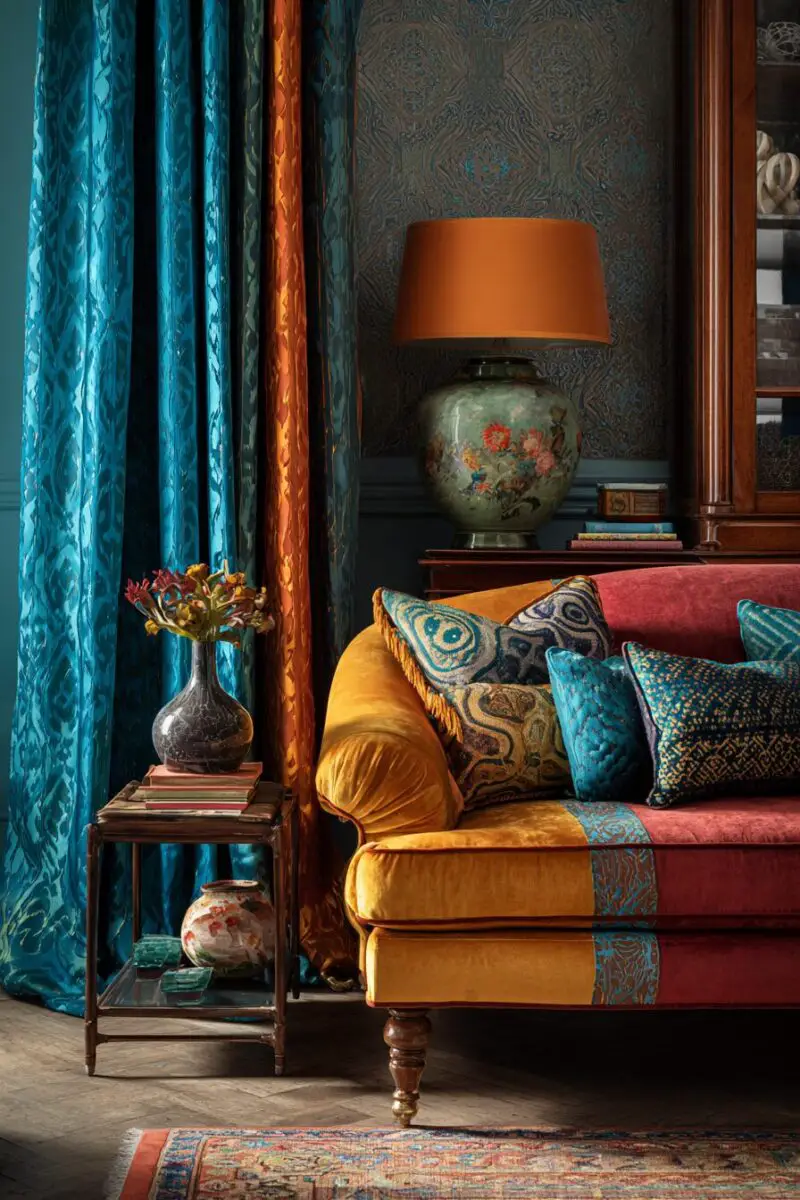
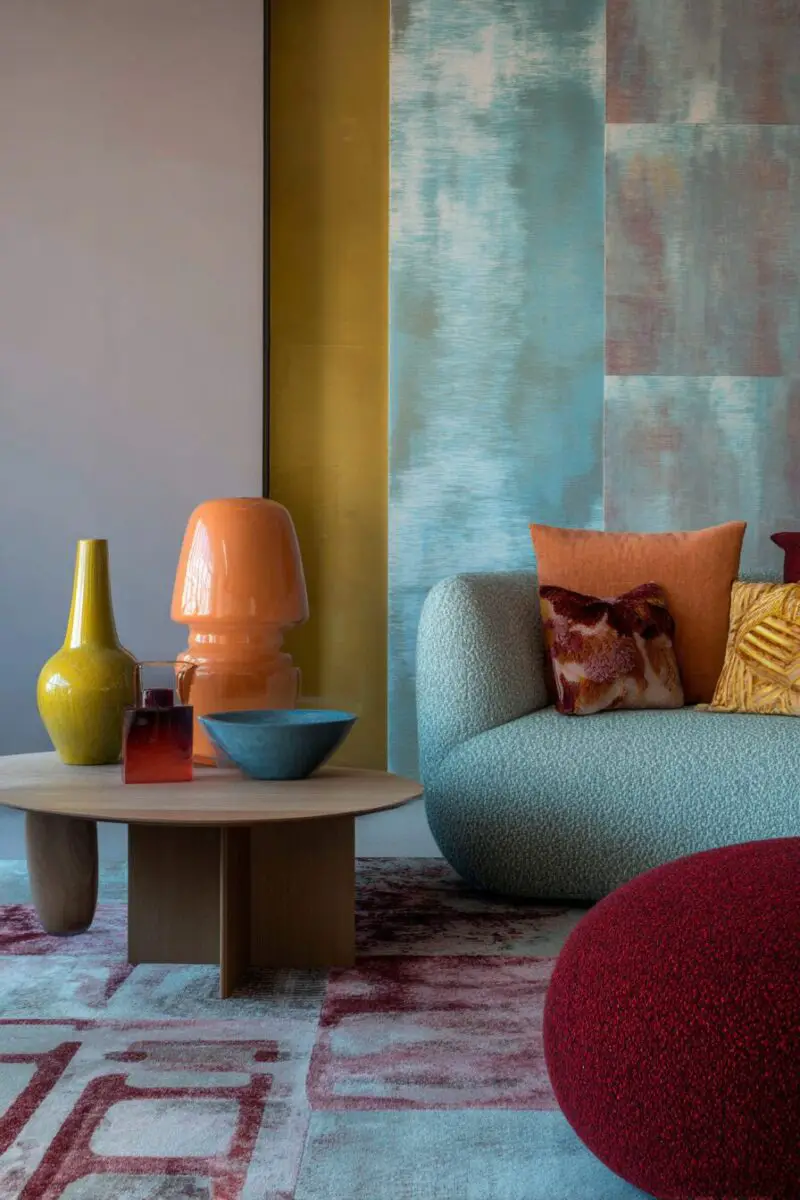
The colors you surround yourself with aren’t just decorative choices – they’re powerful mood modulators that can transform how you feel in your space.
Color psychology in textile layering is about creating intentional emotional responses through carefully selected hues.
Blue textiles promote calm and tranquility, making them perfect for bedrooms and reading nooks where relaxation is the goal.
Warm tones like red, orange, and yellow in throws and pillows stimulate conversation and energy, ideal for living rooms and entertainment spaces.
The beauty of using textiles for color psychology lies in their impermanence – you can shift the emotional tone of a room without painting or buying new furniture.
Try introducing energizing pops of color through pillows in spaces where you need to feel productive or creative.
For areas dedicated to unwinding, layer in textiles in cooler tones like sage green, lavender, or soft blue that signal to your brain it’s time to relax.
Neutrals aren’t emotionally neutral – creams, taugs, and warm grays create foundations of stability and groundedness that shouldn’t be underestimated.
The intensity of color matters as much as the hue itself – saturated jewel tones create drama and passion while pastel versions of the same colors feel nurturing and gentle.
Seasonal affective disorder sufferers might benefit from introducing vibrant, sunlight-mimicking yellow and orange textiles during darker winter months.
For chronic overthinkers, blue and green textile layers can help quiet an active mind when strategically placed in relaxation zones.
Remember that personal associations with colors matter too – the throw blanket in your grandmother’s signature purple might bring comfort regardless of traditional color psychology.
The 60-30-10 rule applies beautifully to textile layering: 60% dominant color (often through rugs or larger pieces), 30% secondary color, and 10% accent color for visual interest.
Design Your Dream Room in Minutes!
🏡 Start Creating FREE →Texture Mixing: The Secret Language of Cozy
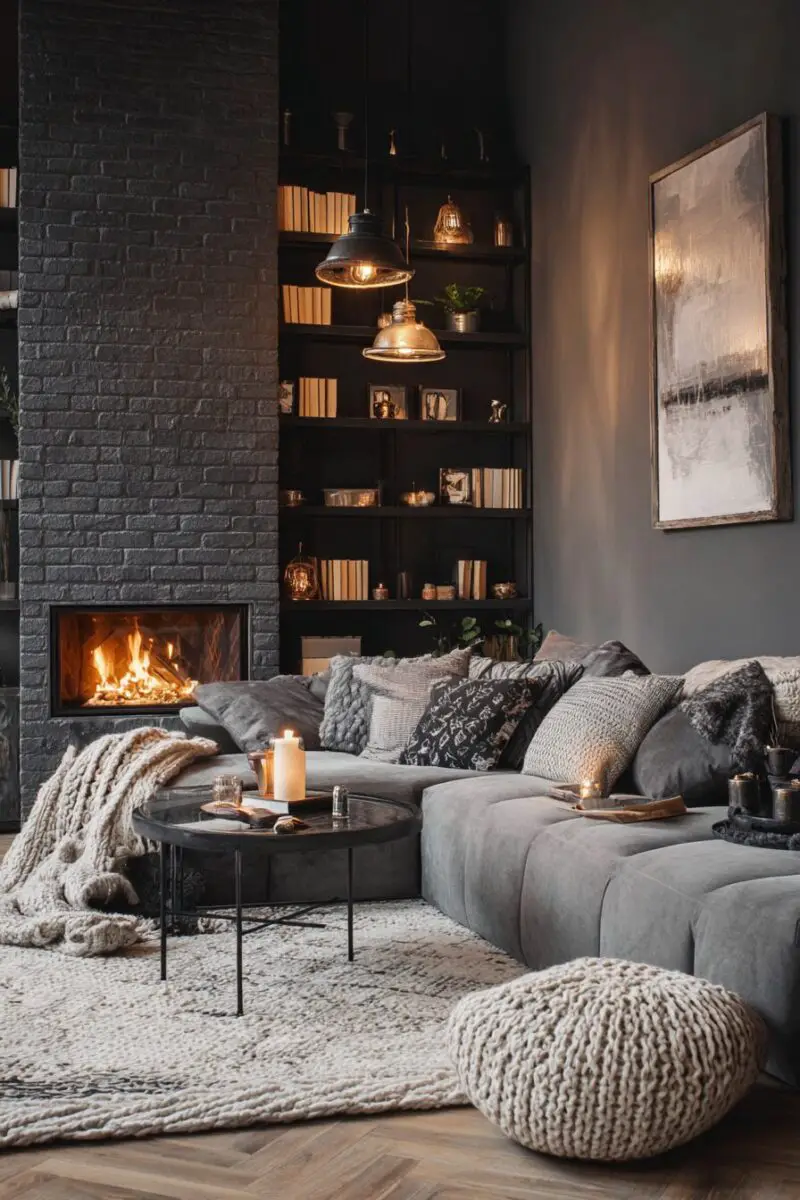
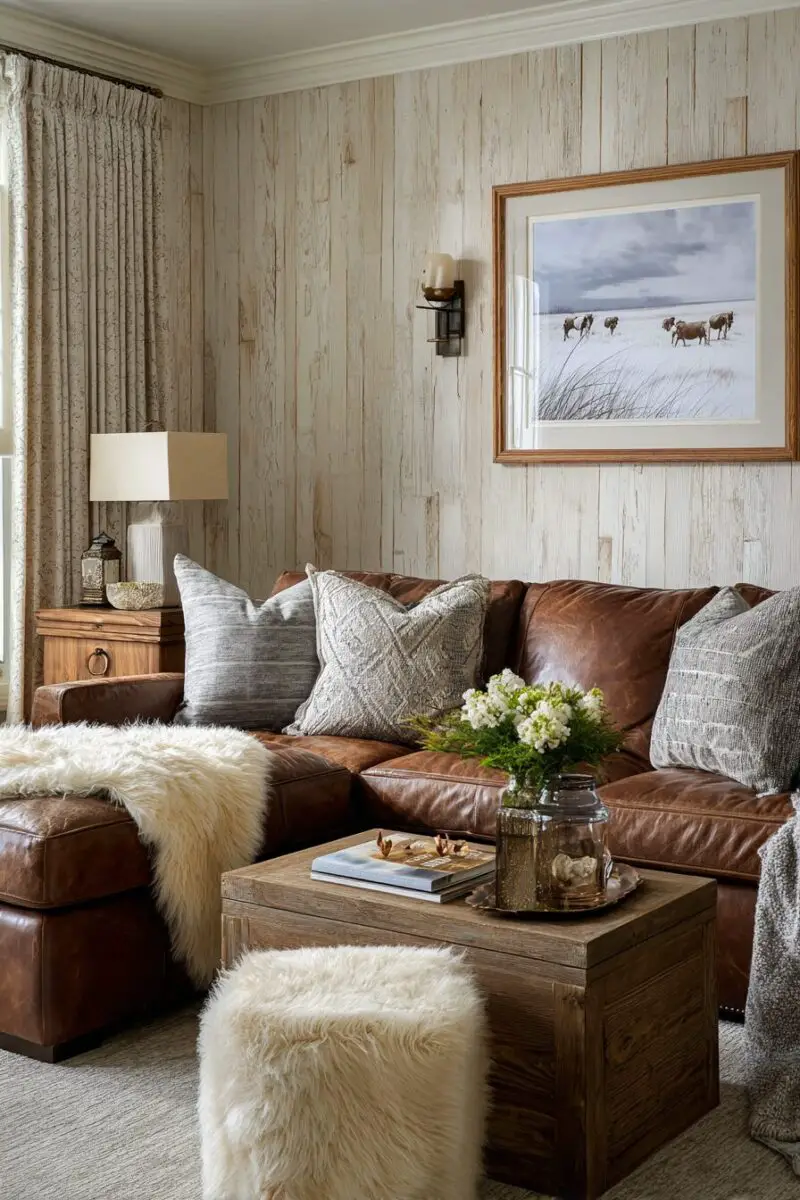
Texture might be the most underrated element in creating truly cozy spaces that beg to be touched and experienced.
Mastering texture mixing in your textiles creates visual and tactile depth that flat, one-dimensional spaces simply can’t achieve.
The contrast between rough and smooth creates a sensory playground – think sleek velvet pillows against a nubby wool throw or a high-pile shag rug beneath a crisp linen sofa cover.
Your brain processes textural variety as richness, making spaces feel more luxurious and intentional without necessarily higher price tags.
Natural fibers like cotton, wool, linen, and jute provide beautiful textural foundations with the added benefit of being breathable and often sustainable.
Synthetic options like faux fur, microfiber, and performance fabrics offer unique textural possibilities that can be more practical for high-traffic areas or homes with pets and kids.
The scale of texture matters – mixing fine, medium, and chunky textures creates the most visually interesting compositions.
Don’t forget that pattern is a form of visual texture – mixing geometric patterns with organic ones creates contrast even when the physical textures are similar.
Layering similar textures in varying weights can be just as effective as dramatic contrasts – think lightweight cotton beneath medium-weight linen beneath heavy cotton canvas.
Seasonal texture adjustments make spaces feel appropriate year-round – replacing slick, cooling textures in summer with fuzzy, insulating ones in winter.
The way textiles catch and reflect light adds another dimension to texture – bouclé and metallic threads create subtle sparkle while matte fabrics absorb light for a cocooning effect.
Remember that texture mixing extends to the constructional elements of textiles too – fringes, tassels, pom-poms, and other decorative elements add playful textural notes.
For those new to texture mixing, start with a “texture board” approach – collect small samples of different textiles to see how they interact before committing to larger pieces.
TRENDING NOW
Spooktacular Boo Basket Ideas for Halloween FunThe Rule of Three: Foolproof Textile Formulas
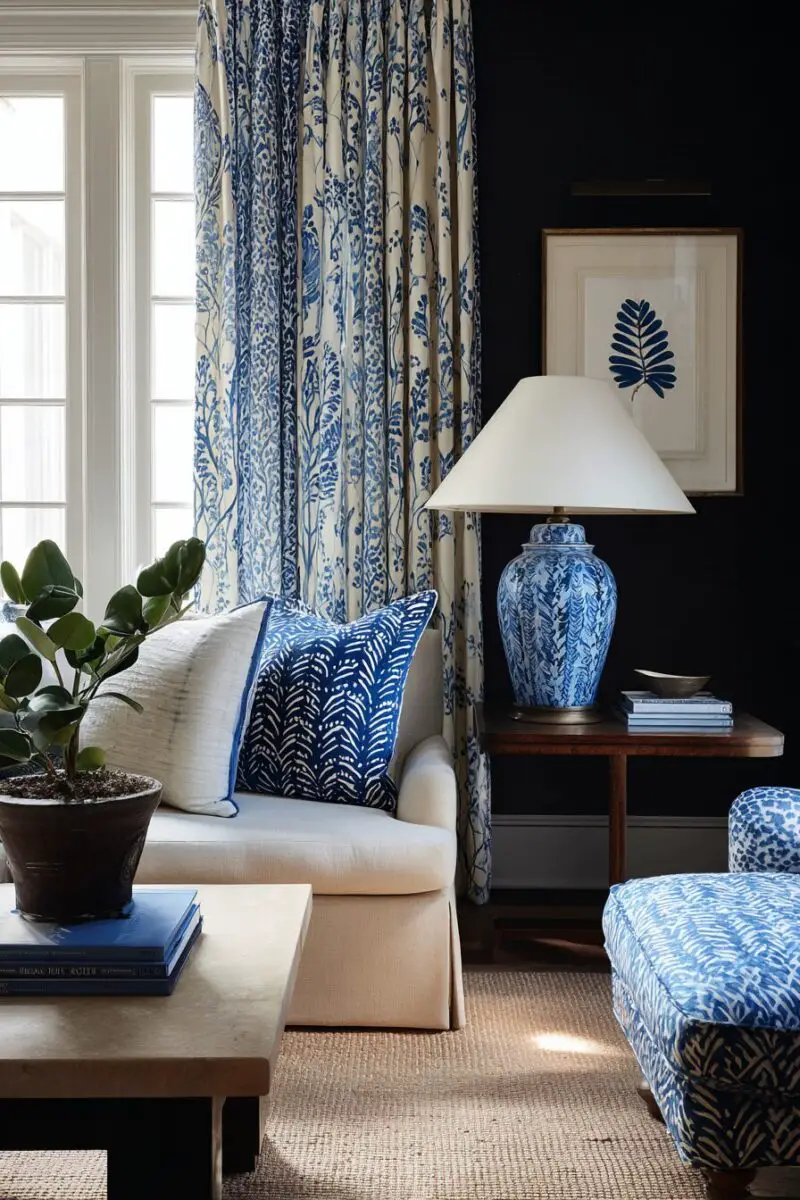
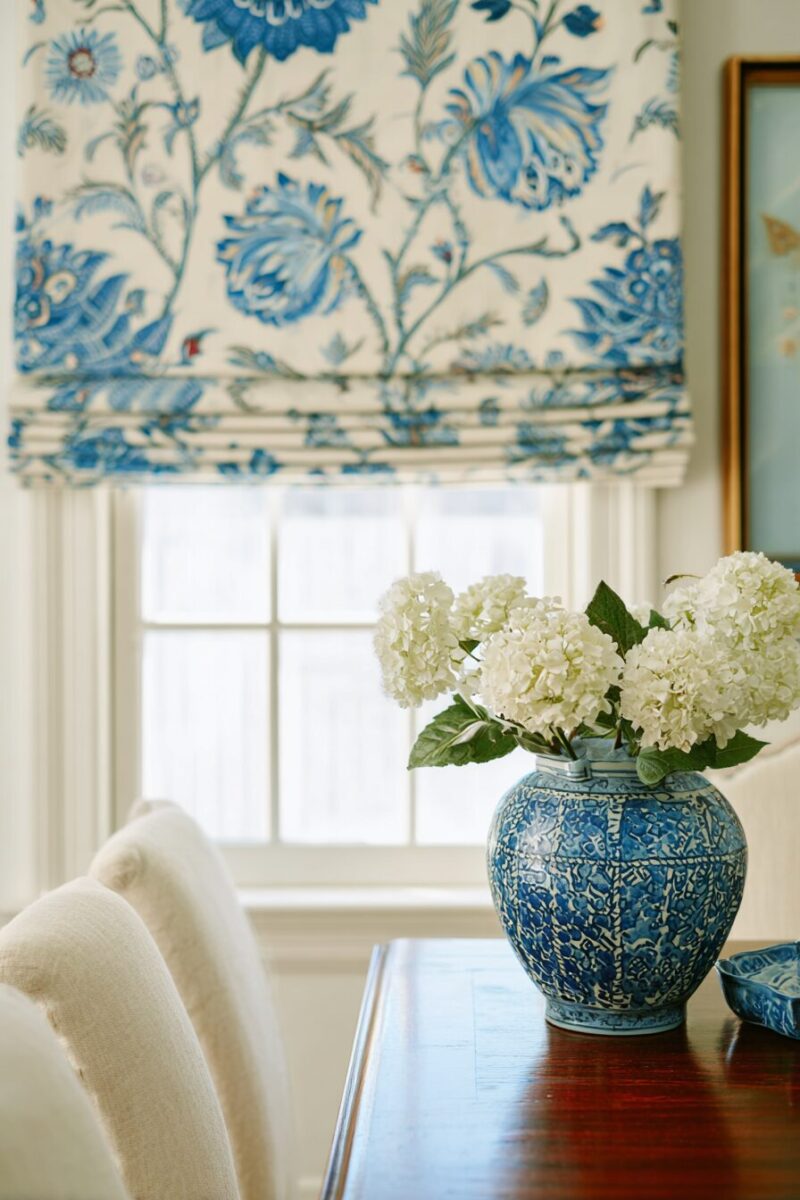
Design experts consistently return to the rule of three when creating perfectly balanced spaces that feel intentional rather than accidental.
This fundamental principle applies beautifully to textile layering, creating arrangements that feel complete without being cluttered.
The simplest application includes one rug, one throw, and one set of pillows – a foolproof formula for instantly cozifying any seating area.
Your brain naturally finds arrangements of three visually appealing – it’s enough for pattern recognition without overwhelming cognitive processing.
Color applications work brilliantly with this rule too – a three-color palette keeps textile collections looking curated rather than chaotic.
The rule of three can apply to pattern scales as well – mixing one large-scale pattern, one medium, and one small creates visual harmony.
For larger spaces, you might create multiple groupings of three that relate to each other while maintaining their own distinct character.
Heights and layers benefit from this approach too – low (rug), medium (throw on furniture), and high (pillows or wall hangings) creates dimensional interest.
When applying this rule to pillows specifically, odd numbers almost always look better than even – three or five pillows on a sofa rather than two or four.
This principle helps with budget management too – focusing on three quality textile elements rather than many mediocre ones elevates the entire look.
The rule provides helpful constraints when faced with overwhelming decor options – simply ask which three pieces would work best together.
For seasonal updates, changing just one of your three elements refreshes the entire arrangement without requiring a complete overhaul.
Remember that the rule of three isn’t rigidly mathematical – it’s about creating groupings that feel intentionally designed rather than randomly accumulated.
Think of it as creating textile “outfits” for your furniture – complementary pieces that work together rather than competing for attention.
Statement Rugs: Building Your Textile Story From The Ground Up
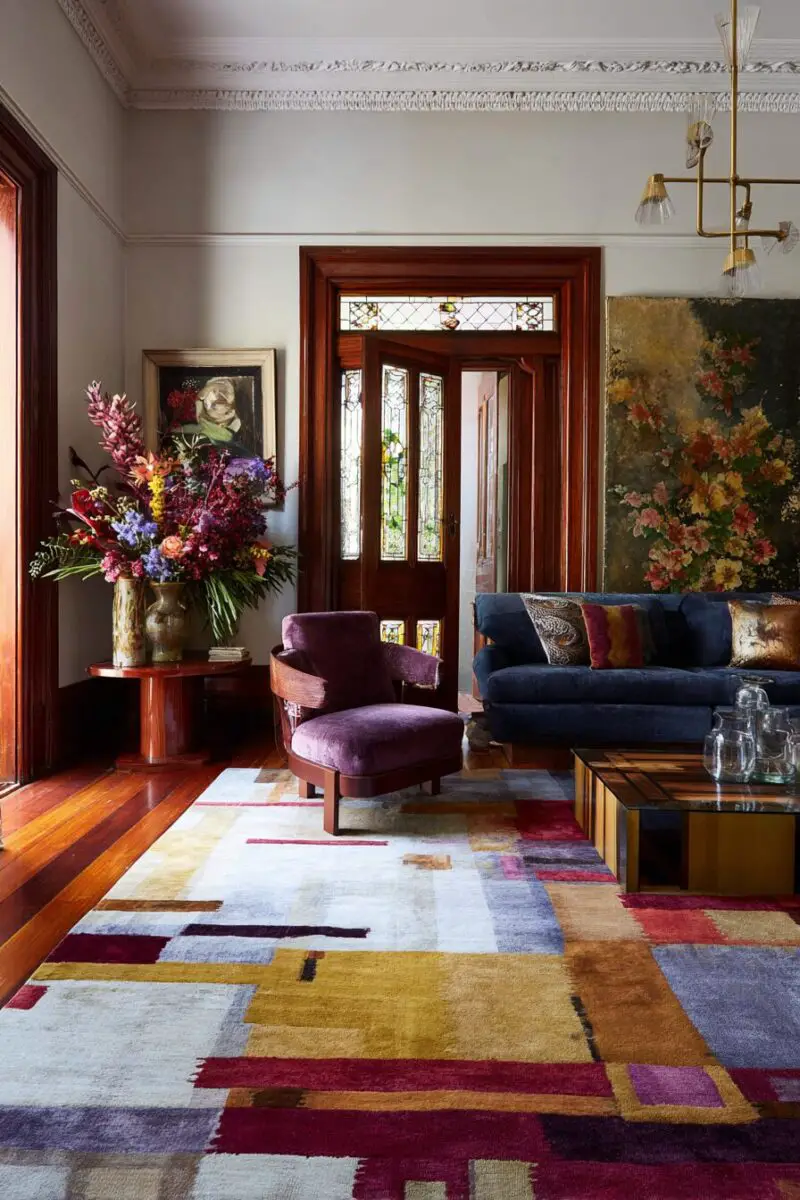
The most impactful textile layering begins with what’s beneath your feet – a statement rug anchors your entire design narrative.
Unlike smaller textiles, rugs provide massive visual impact while simultaneously defining zones and adding crucial comfort underfoot.
Starting your layering journey with a great rug is like choosing the perfect foundation garment – everything else will sit better when built upon it.
The right statement rug establishes your color palette, giving you a reference point for selecting complementary throws and pillows.
Size matters tremendously – the most common mistake is choosing rugs that are too small, making spaces feel disjointed rather than cohesive.
For living areas, aim for rugs large enough that at least the front legs of all furniture sit comfortably on it, creating a unified conversation zone.
Bedroom rugs should extend beyond the sides and foot of the bed, giving you a soft landing pad that doesn’t disappear under the bed frame.
Pattern scale on rugs requires careful consideration – larger rooms can handle bold, large-scale patterns while smaller spaces benefit from more delicate designs.
High-traffic areas deserve natural fiber rugs with some synthetic blend for durability – pure wool, cotton, or silk beauties are better suited for lower-traffic zones.
The pile height of your statement rug influences how other textiles interact with it – lower piles create stable foundations for furniture while higher piles add luxurious squish.
Layering smaller accent rugs over larger, simpler base rugs has become a designer favorite for adding depth without committing to a single bold pattern.
Vintage and antique rugs bring instant character through their natural patina and one-of-a-kind patterns that mass-produced options can’t replicate.
Don’t forget about rug pads – they extend the life of your investment while adding crucial cushioning and preventing slippage.
Seasonal rug rotation isn’t always practical, but lighter flatweaves in summer months can be swapped for plushier options when temperatures drop.
Remember that rugs absorb sound and soften acoustics – an often overlooked benefit in homes with hard flooring throughout.
Throw Blanket Styling: Beyond the Basic Drape

Throw blankets might seem straightforward, but strategic styling transforms them from mere functional items to design statements that invite touch.
The casual drape – letting your throw cascade naturally over a chair corner or sofa arm – creates an effortless, lived-in vibe that says “curl up here.”
For a more structured look, the folded display along the back of seating creates clean lines while keeping warmth within arm’s reach.
The basket collection – gathering several throws in a decorative basket or hamper – makes a textural statement while keeping options accessible for chilly evenings.
The color blocking approach uses throws in complementary hues folded into rectangles and arranged for maximum color impact rather than casual comfort.
Throwing your throw (ironically) in a completely rumpled fashion across a bed or sofa can create an enviably effortless, couldn’t-care-less luxurious vibe.
The “third piece” method treats throws like jewelry in an outfit – the finishing touch that completes a room’s look even when not being used.
Ladder displays using decorative blanket ladders turn your throw collection into vertical art while keeping them from taking up valuable seating space.
The end-of-bed drape works beautifully in bedrooms, adding a layer of color and texture that breaks up the large expanse of bed linens.
For outdoor spaces, consider rolling throws into tight cylinders secured with decorative leather straps or ribbons for a sophisticated picnic vibe.
Seasonal rotation applies wonderfully to throws – lightweight cotton and linen for summer, medium-weight cashmere blends for fall, and chunky knits for winter.
The textile sandwich approach layers throws of different textures – perhaps a smooth cotton beneath a nubby wool – for dimension when folded over chair backs.
Don’t overlook throws as table textiles – a colorful throw can become an instant casual tablecloth for outdoor gatherings or cozy indoor meals.
Remember that throws aren’t just for living rooms – bathroom hooks can hold lightweight turkish towels that function as both decoration and extra warmth after bathing.
TRENDING NOW
Genius Board Game Storage Ideas You’ll LovePillow Arrangement Formulas That Never Fail
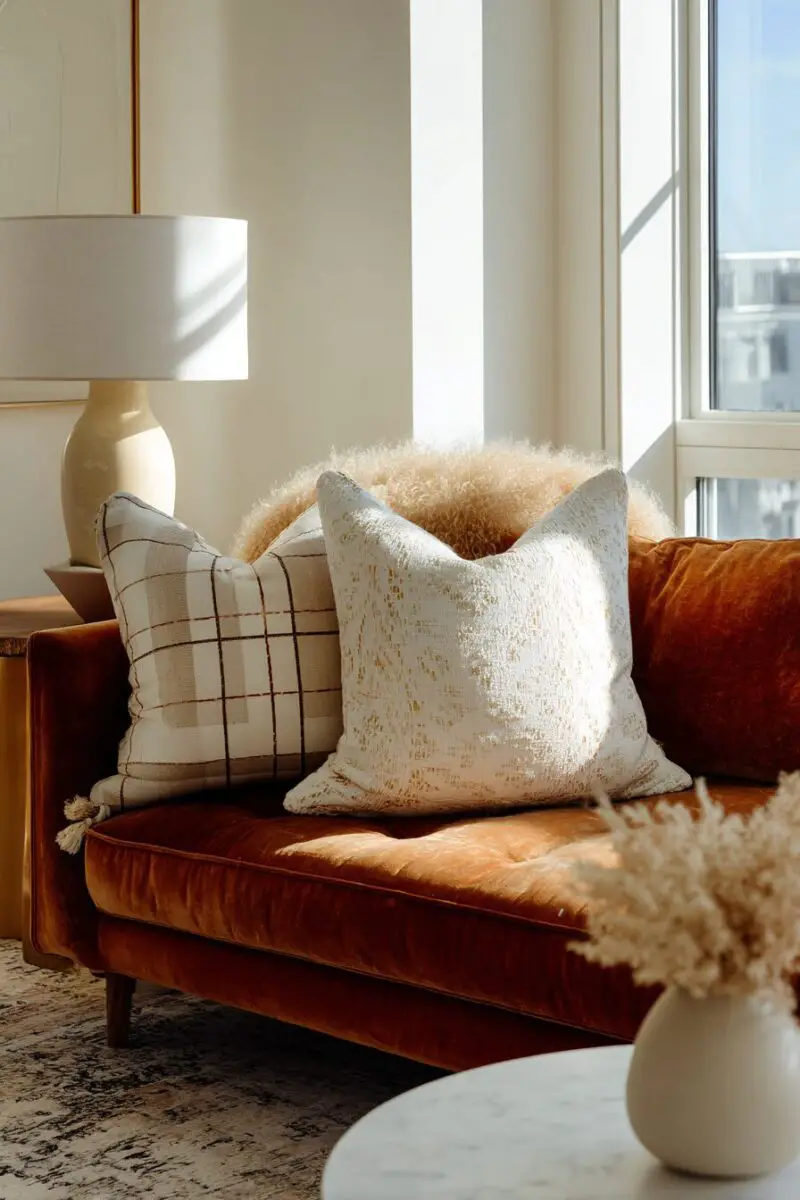
Pillows might seem like minor details, but they’re the facial expressions of your furniture – communicating personality and inviting interaction.
The most foolproof pillow formula starts with a 2-1 arrangement: two matching larger pillows at the ends with one statement pillow in the center.
For longer sofas, the expanded 2-2-1 approach adds a matching middle pair with a single standout pillow bringing focus to the center.
The color progression technique arranges pillows from darkest to lightest (or vice versa), creating a visual ombré effect that feels intentionally designed.
Mixing square and lumbar pillows creates height variation – typically larger squares at the back with smaller lumbars in front for dimensional interest.
The texture triangle ensures balance by including one smooth pillow, one nubby/textured pillow, and one with visual interest like embroidery or fringe.
For beds, the standard hotel-inspired arrangement – two sleeping pillows backed by euro shams with decorative pillows centered in front – creates reliable luxury.
The rule of odd numbers applies perfectly to pillows – groups of three or five almost always look more designed than even-numbered arrangements.
The scale mixing approach combines patterns in different sizes – perhaps a large floral with a medium geometric and a small dotted pattern – for sophisticated layering.
Don’t forget about form variation – standard squares mixed with rounds, bolsters, or kidneys create more interesting compositions than uniform shapes.
The color-blocking technique groups pillows by color family rather than distributing hues evenly, creating impactful color statements.
For reading nooks and bedrooms, include at least one firm, larger pillow specifically designed for back support rather than just decorative function.
The seasonal shift works beautifully with pillows – simply changing covers rather than entire pillows makes storage easier and reduces waste.
Remember that pillow inserts matter tremendously – down or high-quality down alternatives maintain their shape and plumpness far better than cheap polyester fills.
TRENDING NOW
Moroccan Lanterns and Textiles Decor IdeasHeritage Textiles: Weaving Stories Into Your Space

Heritage textiles do more than decorate – they connect your space to cultures, traditions, and craftsmanship that span generations.
Unlike mass-produced textiles, handcrafted pieces from specific traditions carry stories and techniques that make your home uniquely meaningful.
Moroccan wedding blankets with their distinctive sequins and tassels bring both cultural significance and textural magnificence to walls or beds.
Turkish kilim pillows showcase centuries-old geometric patterns that feel simultaneously timeless and perfectly at home in contemporary spaces.
Japanese boro textiles with visible mending tell stories of resourcefulness and wabi-sabi beauty that mass production simply cannot replicate.
Peruvian frazadas with their vibrant colors originally designed for mountain climate protection bring authentic character as throws or wall hangings.
Indian kantha quilts made from layers of recycled saris stitched together create one-of-a-kind throws with unmatched color complexity.
Scandinavian rölakan flatweave rugs bring geometric simplicity and folkish charm that works surprisingly well in minimalist modern environments.
The beauty of heritage textiles lies in their imperfections – the slight irregularities in handwoven pieces tell the story of their human creation.
Mixing heritage pieces from different cultures creates rich, traveled looks that suggest your space has been curated over time rather than purchased in one go.
Supporting artisans directly when possible ensures both authenticity and fair compensation for specialized skills often passed down through generations.
Learning the stories behind your heritage textiles allows you to share their significance with guests, creating deeper connections to your space.
The patina that develops on well-loved heritage textiles adds character that new pieces simply cannot possess – they age beautifully rather than wearing out.
Remember that proper care for these special pieces often differs from standard textiles – research appropriate cleaning and storage to preserve their integrity.
Small Space Solutions: Textile Illusions That Expand Rooms
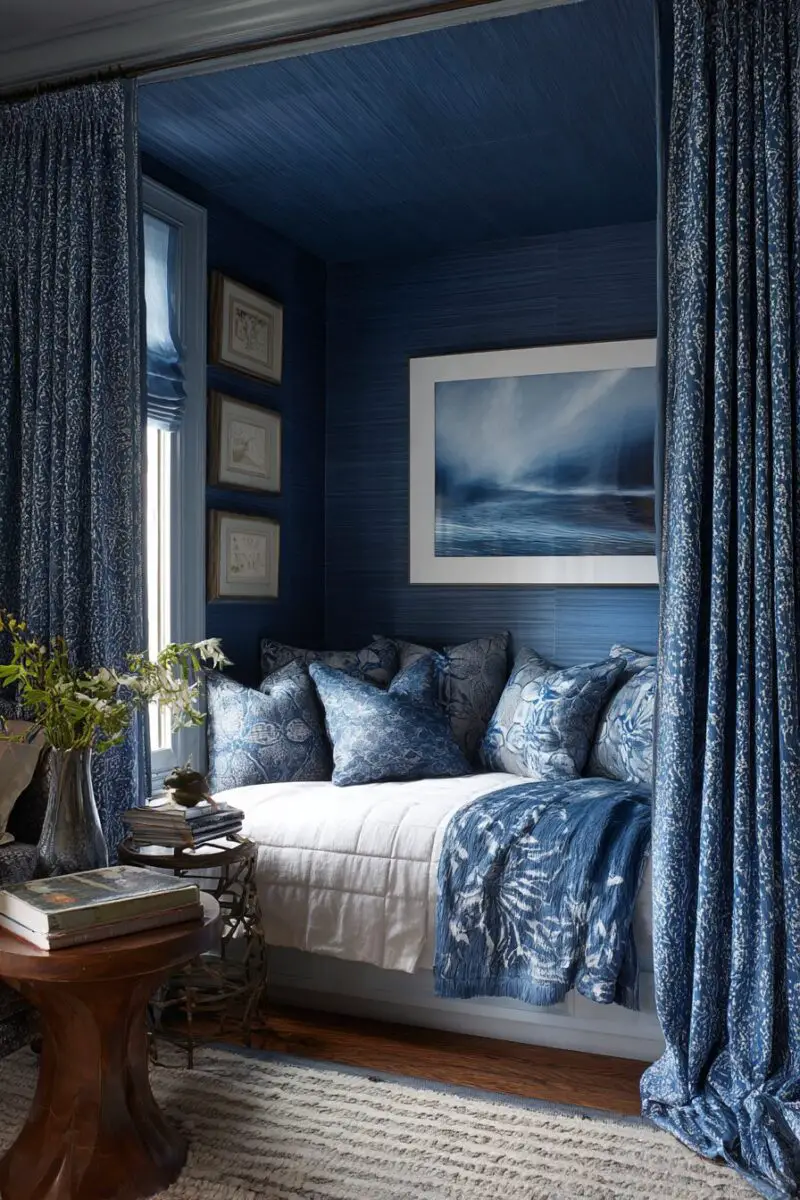
In compact homes, strategic textile layering creates visual expansion that can make spaces feel significantly larger than their square footage.
The vertical eye trick uses wall hangings and floor-to-ceiling curtains to draw the eye upward, creating perceived height in low-ceilinged rooms.
Monochromatic textile layering – using variations of the same color family – creates depth without the visual choppiness that can make small spaces feel cluttered.
Mirrors paired with strategically placed textiles multiply light and create the illusion of continued space beyond walls.
For tiny apartments, multifunctional textiles shine – think ottoman covers that reverse to become floor pillows or throws that double as picnic blankets.
Scale becomes crucial in small spaces – smaller patterns and more delicate textures prevent overwhelming limited visual real estate.
The “fewer but better” approach works brilliantly in compact homes – one stunning statement textile makes more impact than several mediocre pieces.
Transparent or translucent window treatments allow maximum natural light while still providing the softness that textiles bring to hard-edged spaces.
For studio apartments, area rugs become essential zone definers – creating psychological boundaries between living, sleeping, and working areas.
Storage ottomans covered in beautiful textiles serve triple duty as seating, storage, and style elements – perfect for spaces where every inch counts.
Wall-mounted textile displays free up precious floor space while still allowing you to incorporate beloved fabric pieces.
The layered bed becomes even more important in small spaces where the bed often serves as both sleeping area and seating for guests.
Light-colored textiles in small, dark spaces reflect available light and create airiness that darker textiles would diminish.
Remember that in tight quarters, textiles with some sound-absorbing properties help create acoustic comfort that makes small spaces feel more livable.
Sustainable Textile Layering: Eco-Conscious Cozy
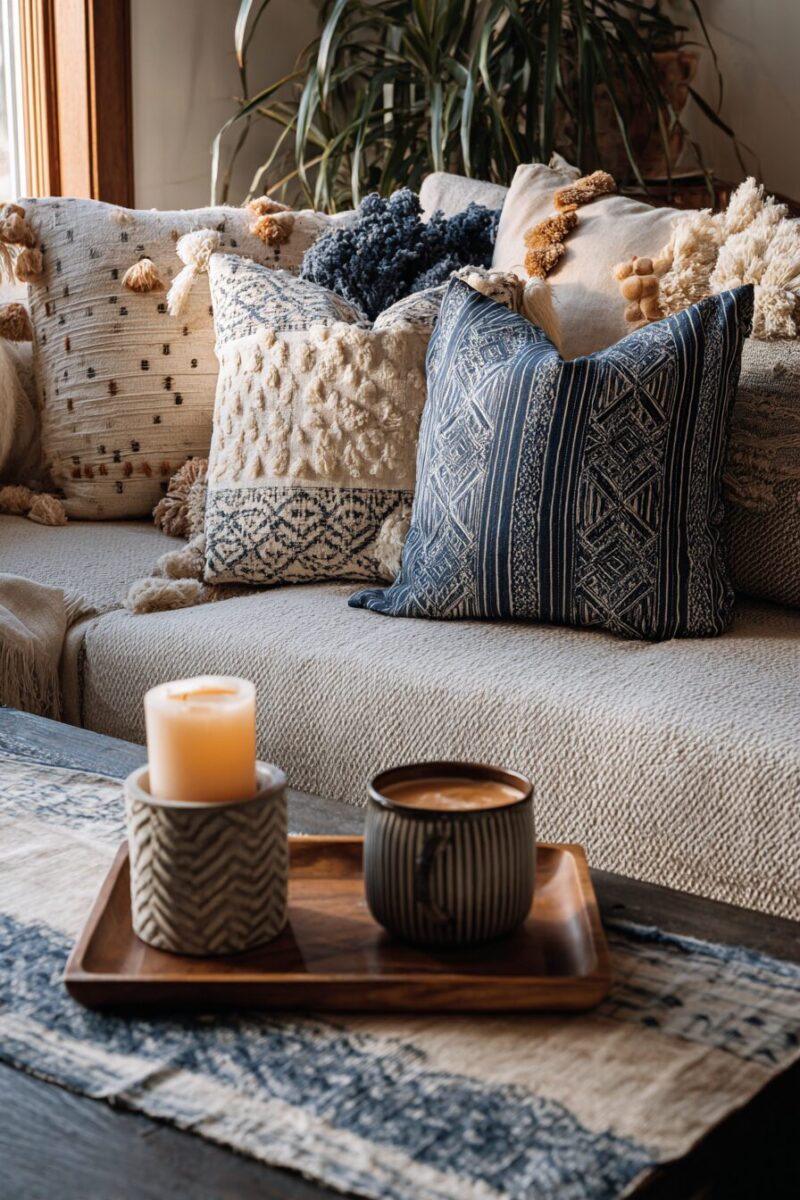
Creating a cozy home shouldn’t come at the planet’s expense – sustainable textile layering merges comfort with environmental consciousness.
Natural, biodegradable fibers form the foundation of eco-friendly textile collections – organic cotton, hemp, linen, and wool lead the charge.
The slow textile movement encourages investing in fewer, better-quality pieces that will last decades rather than seasons.
Vintage and secondhand textiles offer unmatched character while keeping perfectly good items from landfills – online marketplaces and estate sales are treasure troves.
Plant-dyed textiles avoid the harsh chemicals of conventional dyeing processes while offering subtle, complex color variations that mass-produced items can’t match.
Artisan-made textiles directly support skilled craftspeople and traditional techniques that often have naturally lower environmental impacts than factory production.
Recycled fiber innovations have created surprisingly luxurious options – throws made from recycled plastic bottles can be surprisingly soft and durable.
The capsule approach to textile collecting means choosing versatile pieces that can be styled multiple ways and transition between seasons.
Rental options for specialty textiles – particularly for events or seasonal refreshes – reduce waste while still allowing you to enjoy variety.
Care practices matter tremendously in sustainability – choosing machine-washable items and using eco-friendly detergents extends textile lifespan.
Repair culture brings both sustainability and character – visible mending of beloved textiles adds story and keeps them in circulation longer.
Certifications like GOTS (Global Organic Textile Standard) and OEKO-TEX help identify truly sustainable options amid prevalent greenwashing.
Multi-generational appeal becomes a sustainability factor – choosing timeless designs rather than trendy patterns means textiles are more likely to be kept and passed down.
Remember that sustainable doesn’t mean sacrificing style – today’s eco-conscious textile offerings include some of the most beautiful and innovative designs available.
The most inviting spaces tell your unique story through thoughtfully layered textiles that welcome both you and your guests to linger a little longer.

